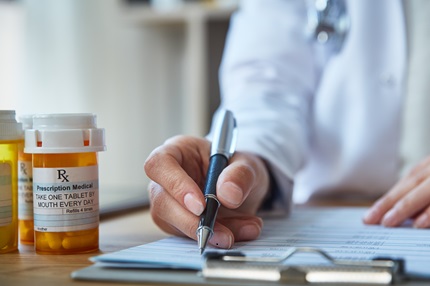Understanding your Part D benefits
Learning more about your Medicare Part D benefits is the first step toward getting the most out of your prescription drug coverage.
Medicare decides which drugs are covered under your medical (Part B) or pharmacy (Part D) benefits.
• Part B drugs include medications that aren’t self-administered as well as durable medical equipment and certain diabetes supplies and are covered under your medical benefit. You’ll typically pay 20% of the cost for these drugs.
• Part D drugs include medications approved by the FDA by prescription only and are covered under your pharmacy benefit.
• Some medications can be covered under Part B or Part D.
How much you’ll pay for covered drugs depends on the drug’s tier and coverage stage you are in.
In 2026, you won’t pay more than $2100 out of pocket for your Medicare Part D prescription drugs.
Our plans group each medication into a tier. The number of tiers may vary based on the plan you choose. You will need to use your Formulary (list of covered drugs) to locate what tier your drug is on to determine how much it will cost you. The lower the tier a drug is, the lower the cost.
The terms below are listed in many important documents, such as your plan’s Summary of Benefits, Evidence of Coverage (EOC), or Formulary (List of Covered Drugs). Getting to know these terms can help you better understand your coverage.
• Deductible: The amount you pay before Florida Blue Medicare begins to pay its share of the cost. Some plans have a drug deductible before they start to pay for your prescriptions.
• Copay: A flat dollar amount (for example, $10) you pay each time you fill a drug.
• Coinsurance: A percentage (for example, 10%) of the amount a pharmacy is allowed to charge you for a drug.
• Out-of-pocket cost: The most you will have to pay out of your own pocket to fill your drugs to get to the catastrophic coverage stage. This includes your deductible and any copays or coinsurance amounts.
• Drug spend: This is the full cost of the drug.
• True Out-of-Pocket costs (TrOOP): Your True Out-of-Pocket (TrOOP) costs are all the payments you make for your prescription drugs. In 2026, once your payments total $2,100, your catastrophic coverage begins.
• Formulary (List of Covered Drugs): The list of drugs your prescription drug plan covers.
• Tiers: Drugs are sorted into tiers, so the most effective and least costly medicines are used first. This helps make your medications more affordable. Medications are sorted by their effectiveness, cost and if there are other drugs available that treat the same conditions.
• Drug coverage stage: There are three drug payment stages for your prescription drug coverage. How much you pay depends on what stage you are in when you get a prescription filled or refilled.
If you cannot afford your medications, you may want to apply for Extra Help from Medicare. This program helps people pay for their Part D drugs.
To see if you qualify for getting Extra Help, call:
• 1-800-MEDICARE (1-800-633-4227). TTY: 1-877-486-2048, 24 hours a day/7 days a week
• The Social Security Office at 1-800-772-1213, 8 a.m. – 7 p.m., Monday – Friday (TTY: 1-800-325-0778)
• Your State Medicaid Office 1-888-419-3456, Monday – Friday 8 a.m. – 5 p.m. ET (TTY: 1-800-955-8771)
